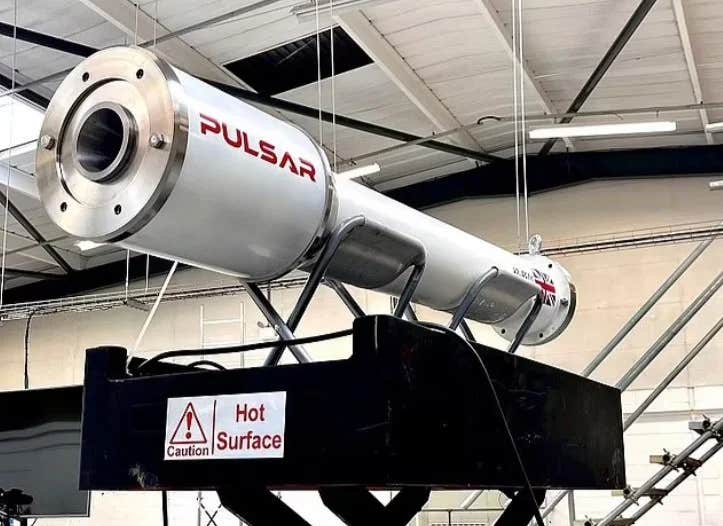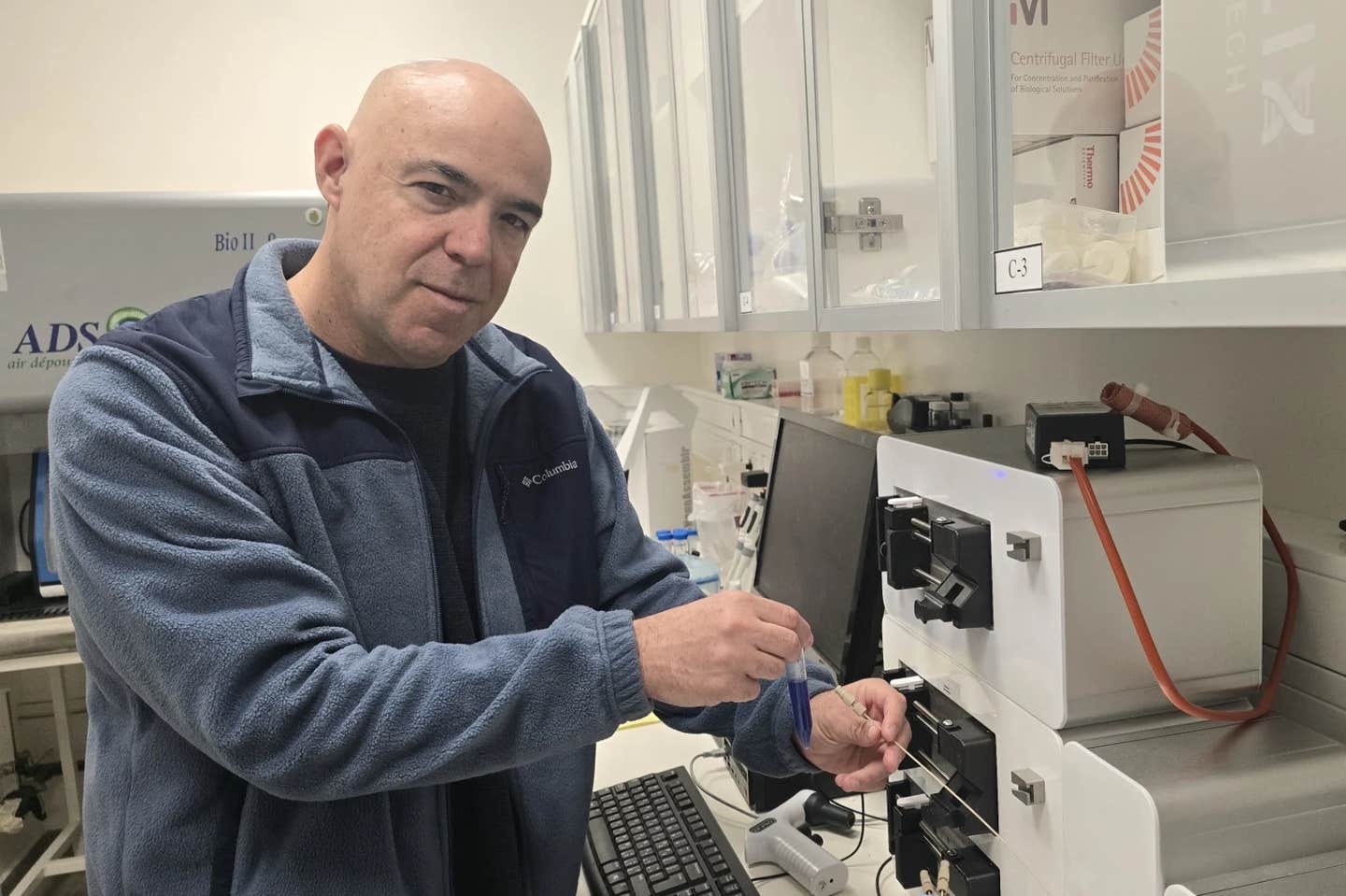Plastic waste-powered rocket could sustainably travel to Mars
A nuclear fusion company with lofty aspirations around sustainable space travel, has test-fired a rocket engine powered by plastic waste.

The rocket engine (pictured) proudly displayed the Union flag during testing earlier this month. Rocket engines could be used for a variety of applications, including launching people and satellites into space. (CREDIT: Pulsar Fusion)
Pulsar Fusion, a UK-based nuclear fusion company, has achieved a significant milestone in sustainable space travel by test-firing a rocket engine powered partly by plastic waste. This hybrid rocket engine is part of an ambitious journey to develop nuclear fusion technology for high-speed propulsion, potentially halving travel times to Mars.
Based in Bletchley, the company recently completed successful tests at COTEC, a Ministry of Defense military base in Salisbury. The rocket design endured 20g of vibration, simulating a real rocket launch, showcasing the durability and potential of their technology.
Pulsar Fusion's ultimate goal is to create a hyper-speed propulsion engine for interplanetary travel using nuclear fusion technologies within the next four years.
This idea isn't entirely new; Virgin Galactic explored using recycled plastic waste in rocket fuels in 2014 but abandoned the project after a failed test flight. Similarly, the Scottish company Skyrora has tested Ecosene fuel made from converted plastic waste.
Pulsar Fusion's "green" rocket uses a hybrid fuel made of high-density polyethylene (HDPE) and a nitrous oxide oxidizer. HDPE, found in products like bottles, piping, and cutting boards, offers ample recycling opportunities for fuel sourcing.
The company completed the first static tests of its hybrid rocket engine at the Salisbury base. These tests generated supersonic shock diamonds typical of high-temperature, high mass flow rate rocket exhausts, resulting in a dramatic, fiery plume. A demonstration for potential clients is planned for this week.
“We are delighted with the UK test firings at COTEC. It is a hugely significant moment and we are proud this rocket is built in the UK," says Pulsar Fusion CEO Richard Dinan. "To have a British rocket test on UK soil is novel. Pulsar is among a very few companies around the world to have built and tested these technologies. We have a team of fantastic scientists with a wealth of experience to thank for these milestones."
The company envisions its "green" rocket engine being used for launching people and satellites into space. However, their plans extend beyond this, aiming to develop high-speed propulsion engines based on nuclear fusion and launch them within this decade.
The technology aims to recreate the fusion process occurring inside the Sun, where gravitational forces, extreme heat, and pressure cause nuclei to collide and release vast amounts of energy. Despite decades of research and some exciting advances, the technology is still far from being a viable energy source.
Pulsar Fusion's objectives are undeniably ambitious. The company has been working on nuclear fusion technology for nine years, aiming to use powerful electromagnets to direct the energy released through fusion reactions into propulsion.
This method would eliminate the need for heavy fuel supplies on spacecraft and enable travel at incredible speeds, potentially reducing the journey time to Mars by half.
It's important to acknowledge the significant challenges in recreating nuclear fusion on Earth. Scientists have struggled with this for decades, making the incorporation of this technology into a propulsion system for next-generation spacecraft a formidable challenge.
Despite these hurdles, Pulsar Fusion remains confident in its aspirations. The company aims to demonstrate a nuclear fusion propulsion engine for static fire testing in 2025, with plans to launch and test one in orbit by 2027.
Note: Materials provided above by The Brighter Side of News. Content may be edited for style and length.
Like these kind of feel good stories? Get The Brighter Side of News' newsletter.
Rebecca Shavit
Science & Technology Journalist | Innovation Storyteller
Based in Los Angeles, Rebecca Shavit is a dedicated science and technology journalist who writes for The Brighter Side of News, an online publication committed to highlighting positive and transformative stories from around the world. With a passion for uncovering groundbreaking discoveries and innovations, she brings to light the scientific advancements shaping a better future. Her reporting spans a wide range of topics, from cutting-edge medical breakthroughs and artificial intelligence to green technology and space exploration. With a keen ability to translate complex concepts into engaging and accessible stories, she makes science and innovation relatable to a broad audience.



